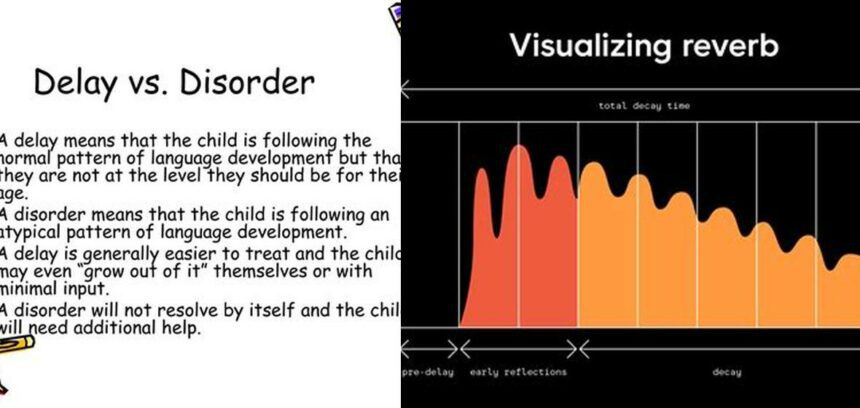Are you ready to dive into the intriguing world of audio production and unravel the mystery of pre-delay vs. delay? From crafting the perfect sound to avoiding a muddy reverb, this guide has got you covered! So, grab your headphones and let’s explore the fascinating realm of pre-delay and delay in audio production.
Understanding Pre-Delay and Delay in Audio Production
When diving into the world of audio production, two terms that consistently surface are pre-delay and delay. Though they might seem similar at first glance, their functions and applications in music and sound engineering are distinct. Grasping the nuances between pre-delay and delay is essential for creating the desired auditory experience, whether the goal is to simulate an acoustic environment or to add rhythmic complexity to a piece.
What is Pre-Delay?
Pre-delay is a parameter primarily associated with reverb processors. It represents the interval between the original dry sound and the point at which the early reflections and reverb tail become perceptible. It’s a critical aspect that contributes to the perceived spatial characteristics of the sound.
Impact of Pre-Delay on Clarity and Room Size Impression
Adjusting the pre-delay can dramatically alter the listener’s perception of the sound’s environment. A longer pre-delay suggests a more expansive space, as it mimics the time taken for sound waves to travel to distant walls and return. This can give the impression of being in a large hall or cavernous area. Conversely, a shorter pre-delay implies a smaller, more intimate setting.
Pre-Delay as a Tool for Mix Clarity
Properly setting the pre-delay time is crucial for maintaining the clarity of a mix. By delaying the onset of reverb, pre-delay prevents the reverb from smothering the initial attack of the sound source. This separation ensures that the original sound cuts through the mix more distinctly, thus avoiding a muddy or washed-out sound.
What is Delay?
While pre-delay is a facet of reverb, delay is an effect in its own right. Delay takes the original audio signal and repeats it after a set period. These repetitions can vary in number, volume, and the time interval between them, creating echoes that can be rhythmic or atmospheric.
Delay’s Role in Rhythmic Complexity and Atmosphere
Delay is versatile and can be used for various creative purposes. It can add complexity to rhythmic elements by interspersing echoes at specific intervals. Alternatively, it can create a lush, enveloping soundscape that adds depth and texture to a track.
When to Use Reverb vs. Delay
Choosing between reverb and delay depends on the desired outcome. Reverb is typically used to establish a sense of space and depth, making the audio sound as if it’s occurring within a physical environment. Delay, on the other hand, can be applied for rhythmic enhancement or to add a sense of movement and continuity to a sound.
Using Reverb and Pre-Delay Together
Integrating pre-delay with reverb is a technique that can yield a more polished and spacious mix. The pre-delay parameter helps in setting the stage for the reverb, determining how soon after the initial sound the reverb’s effect begins. This technique can help in creating a more natural and cohesive sound.
Adjusting Pre-Delay for Optimal Effect
Setting the correct pre-delay time requires careful consideration of several factors, including the type of sound source, the tempo of the piece, and the desired impression of space. A common approach is to sync the pre-delay time with the tempo of the track, using note durations as a reference for timing.
Calculating Pre-Delay and Delay Times
Using tools like the Delay & Reverb Time Calculator can aid in determining the appropriate pre-delay and delay times. For instance, a 1/64 note might serve as the pre-delay time, while the delay time could be set to a longer note value, such as a 1/2 note.
Practical Tips for Setting Pre-Delay and Delay
Here are actionable steps for adjusting pre-delay and delay:
- Consider the rhythmic structure of your track and decide whether delay or reverb will suit its style best.
- Use a delay/reverb time calculator to align the pre-delay and delay times with the tempo of the music.
- Experiment with different pre-delay times to find the right balance between clarity and spatial impression.
- Listen carefully to how the delay interacts with the music, and adjust the feedback and time settings to achieve the desired effect.
Tips for Avoiding a Muddy Reverb Sound
One of the pitfalls of using reverb is the potential for creating a muddy mix. To avoid this:
- Use pre-delay to separate the dry sound from the reverb tail.
- Adjust the reverb’s decay time so it doesn’t overpower the original signal.
- Employ equalization to reduce low-frequency build-up in the reverb signal.
Conclusion: Harnessing Pre-Delay and Delay for Superior Sound
Understanding and manipulating pre-delay and delay is a testament to a sound engineer’s expertise. With the right approach, these tools can transform a flat, uninspiring mix into a dynamic and immersive auditory experience. From setting the scene with pre-delay to adding rhythmic flair with delay, the power to sculpt sound lies in the knowledgeable application of these effects.
Continuing Your Audio Production Journey
For those eager to delve deeper into the art of audio production, exploring resources such as iZotope’s guide on when to use reverb and delay, or watching comprehensive tutorials like SoundOracle’s Pre-Delay Explained can be incredibly beneficial. Armed with knowledge and the right tools, your mixes can reach new heights of clarity and expression.
What is pre-delay in reverb?
Pre-delay refers to the amount of time between the original dry sound and the audible onset of early reflections and reverb tail.
How does adjusting pre-delay affect the sound?
Adjusting the pre-delay will introduce time between the original sound and when the sound of the reverb begins. A longer pre-delay will give the impression of a larger room because the soundwave takes longer to travel to the walls before it bounces back to us.
Why is pre-delay important in reverb processing?
Carefully adjusting the pre-delay parameter makes a huge difference in the “clarity” of a mix. It can enhance a mix’s perceived space, depth, and separation.
How does pre-delay help in avoiding muddiness in reverb sound?
Using pre-delay helps avoid muddiness and adds depth to audio by preventing the reverb from masking the initial attack of the sound, allowing it to cut through the mix more clearly.
How can pre-delay be used to enhance spatial characteristics without compromising clarity?
By adjusting the pre-delay time, a balance can be achieved that enhances spatial characteristics without compromising the clarity and definition of the sound.







